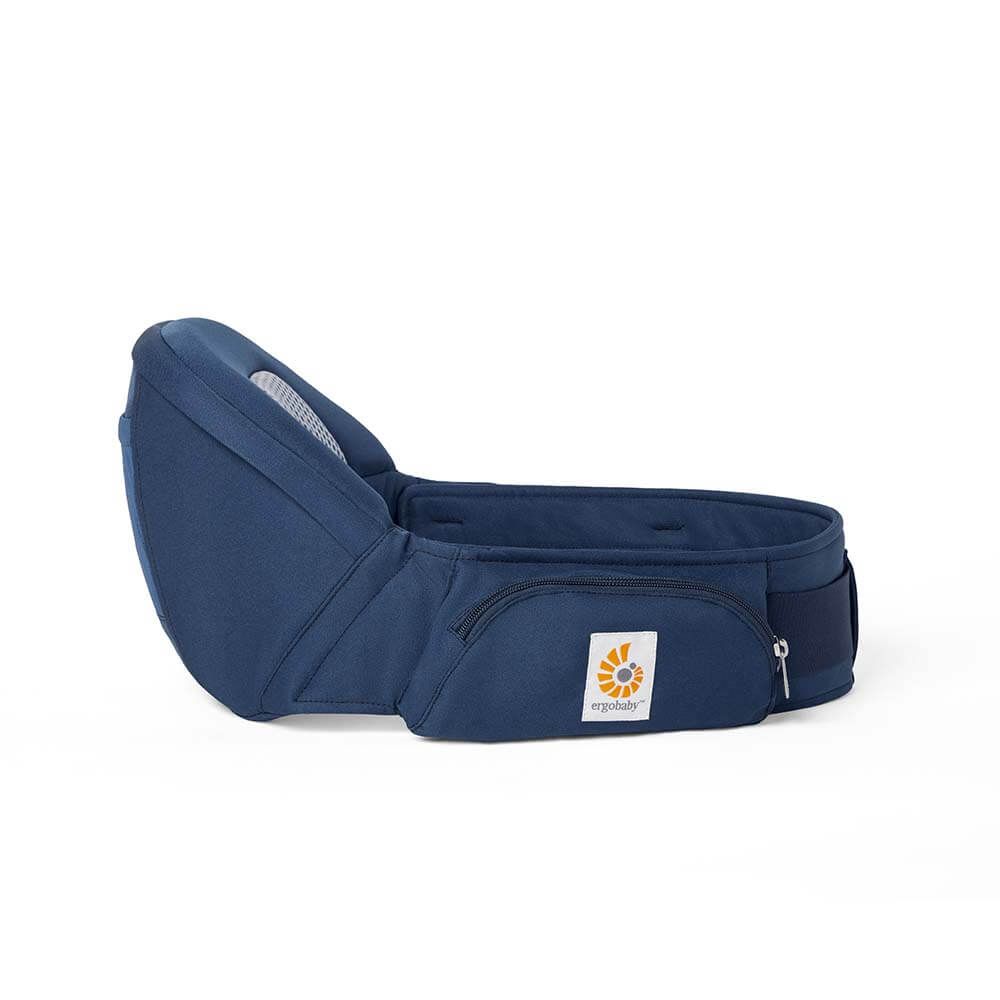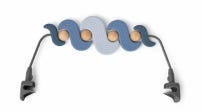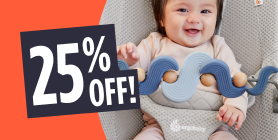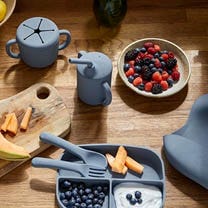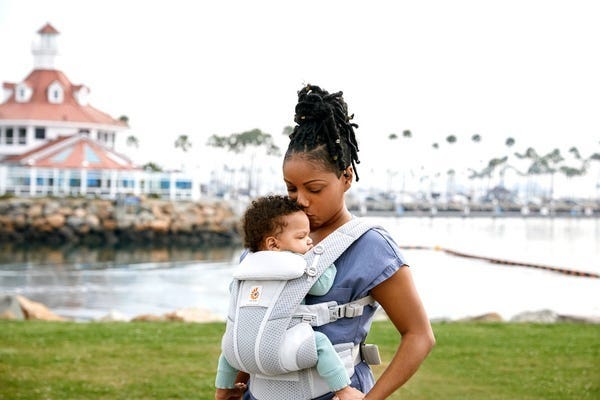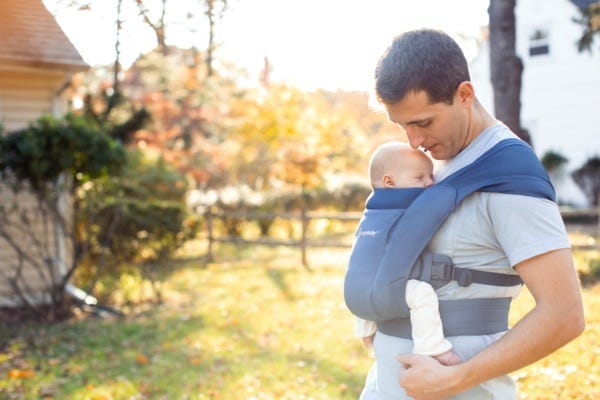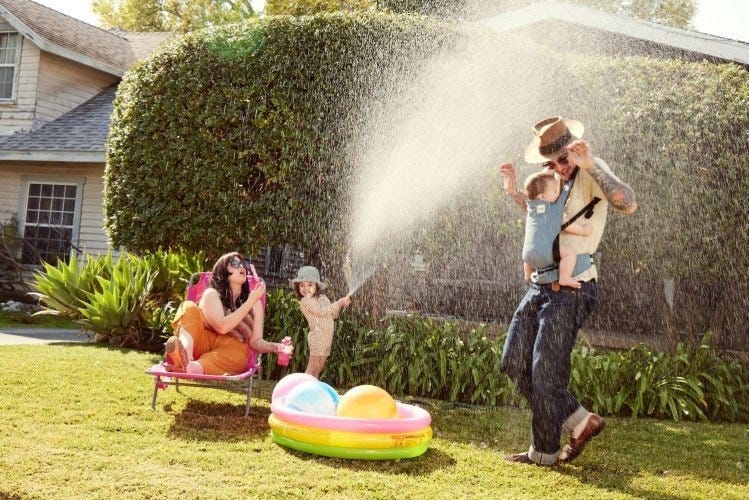“Your body works as well as the bodies of your ancestors, almost none of whom had access to any sort of infant-feeding or birth technology.” ~ Ina May The word “midwife” comes from the Anglosaxon, med-wyf, “wise woman,” as defined in Barbara G. Walker’s “Woman’s Encyclopedia of Myths and Secrets (Harper Collins © 1983). In France, a midwife is also known as a sage femme, or a "wise woman." The general thread in all of the references regarding ancient midwifery is that a midwife was there to support the woman in labor. Labor was perceived as a basically natural process. Proof of midwifery has been found in The Bible, Hindu records, and during Greek and Roman times. Midwives functioned as respected, autonomous care providers to women during their reproductive cycles. Historians have noted that midwifery has been characterized as a social role throughout recorded history regardless of culture or time. We Are Born For Successful Natural Birthing Ina May’s Guide to Breastfeeding (Bantam Books © 2009) book offers encouraging points: “Nowadays, more and more women are turning to doulas for help during labor. Evidence for the positive impact of the presence of a supportive relative, midwife, doula at the side of a laboring woman is quite strong: Many studies have found that women with labor support had shorter labors and much less need for pain medication, intravenous oxytocin augmentation, forceps, vacuum extraction, and Cesarean section than women who labored without this care.” Studies by the independent consumer group, Public Citizen (affiliated with Ralph Nader), has reported that a woman can reduce her risk of having a Cesarean section birth by receiving care from a Certified Nurse-Midwife. Birthing a baby without interferences, like breastfeeding, is a natural process. Vast scientific evidence proves babies develop optimally given these powerful first supportive steps to bonding and creating healthy attachment and immune systems. Our cocktail of hormones, skin-to-skin contact, shared breath, and physical motion moving together, as in the womb, all contribute to a beneficial connection between parents and their baby. Ina May’s Guide to Breastfeeding book reminds us, “Even though your culture may make you feel uneasy about breastfeeding (depending upon where you live), you are still part of a species that has existed successfully on this planet for at least two thousand generations and has, for the most part, depended upon artificial feeding of its young for little more than half a century. There’s another blessing—your baby’s body has the same level of innate wisdom that yours does and is programmed with similarly awesome survival features.” History’s Cascade of Interferences Barbara G. Walker gives historical details of the challenges midwifery has triumphed over. “Toward the end of the 19th century, male doctors moved in on the last remaining area of exclusively female medicine, and took the midwifery-trade away from women.” The American Medical Association instigated the outlawing of midwifery by the U.S. congress, and the new male “obstetricians” replaced them. “Frequently, an elder midwife found herself out of work, or even in jail for illegal practice, in a community most of whose members she had brought into the world.” There had been earlier efforts made by the Catholic Church in medieval times to influence women to move in the direction of patriarchal birth practices. “The real reason for ecclesiastical hostility seems to have been the notion that midwives could help women control their own fate, learn secrets of sex, birth control, or procure abortions. The pagan women of antiquity had considerable knowledge of such matters, which were considered women’s own business, not subject to male authority.” Formal education was not given to women, so the midwife’s gifts in assisting the mystery of childbirth became revered, as much as they were feared and persecuted. “The Handbooks of the Inquisition stated: No one does more harm to the Catholic faith than midwives.” This type of propaganda fueled the torture and burning of nearly nine million European women, many of whom were midwives and healers. This kind of misleading “’education’ was ignorant of the historical truth that the very existence of the human race depended for thousands of years on the unique ability of mothers to love little children and of “wise women” to assist the instincts of motherhood.” These are the facts according to the “midwifery” section of Women’s Encyclopedia of Myths and Secrets. Midwifery’s Beginnings in the United States From The Parkland School of Nurse Midwifery: “Native Americans had midwives within their various tribes. Midwifery in Colonial America began as an extension of European practices, even warranting priority on ferry boats to the Colony of Massachusetts, and Brigit Lee Fuller attended three births on the Mayflower. Midwives filled a clear, important role in the colonies, one that Laurel Thatcher Ulrich explored in her Pulitzer Prize winning book: A Midwife's Tale: The Life of Martha Ballard Based on Her Diary 1785-1812. (Published in 1990).” “Midwifery’s well skilled practitioners were actively sought by women. As medical advances in pharmacology, and hygiene were implemented routinely in obstetrics, without integration into midwifery practices, homeopathic remedies and traditions practiced by generations of midwives began to appear in stark contrast to more "modern" remedies suggested by physicians. The midwifery controversy lasted from approximately the end of the 19th century through the first two decades of the following century. Midwifery of untold centuries was almost eradicated in the United States in less than three decades by restrictive legislation and effective public campaigns.” Traditional midwifery was decreasing in popularity just as a new type of midwifery was developing in the United States. Mary Breckinridge, a woman from a prominent American family who had experienced personal childbearing losses, had a strong intention to promote maternal and child health. A dilettante in her younger years, Breckinridge found herself in the 1920s in an unhappy marriage, and having lost of two young children. “She discovered similarities between herself and other women from her home state of Kentucky. Armed with her formidable social and political connections (her grandfather had been Vice President of the United States, and her father had been an Ambassador) and possessing an inquisitive mind, she sought alternative practices to the prevailing models of care.” After traveling abroad, she found the British model of the nurse-midwife offered the most promise. “Mary Breckinridge was so committed to the concept of nurse-midwifery that she herself attended nurse’s "training" and was then educated as a midwife in Britain. Accompanied by venturous British nurse-midwives, she returned to the United States and formally founded the Frontier Nursing Service (FNS) in Hyden, Kentucky, in 1925. Mary Breckinridge evidenced foresight in her belief in the system of nurse-midwifery.” From midwifeinfo.com: “In the late 1950s, consumers of hospital-based medical maternity care began to rebel. There was a growing interest in childbirth education, breastfeeding, and natural childbirth. Women and families who were pessimistic about their chances of having a safe and satisfying birth in the hospital began to explore the option of home births with midwives.” Articles on the rebirth of the midwife appeared in popular magazines such as Time and Life in the 1970s, stirring wider interest. Midwifery grew rapidly in the 1970s-1980s facilitated by the growing awareness of the safety and satisfaction midwifery care provided. In 1982, the Midwives’ Alliance of North America (MANA) was founded to embrace all midwives including all levels of training and credentials. The MANA members have emphasized their insistence on autonomy from outside control, despite the attendant challenges of lower pay for long hours, lack of legal standing, and lack of support and cooperation from associated medical practitioners. Recent reports show a lower incidence of low-birth weight babies delivered by Nurse-Midwives, according to the U.S. Institute of Medicine and the National Commission to Prevent Infant Mortality. Midwives became more familiar to consumers as they developed the first alternative birth centers. Nurse-Midwives began to care for an increasing number of women from all socioeconomic sectors, and provided national standards of practice. They developed a certifying examination to provide a measure of quality assurance for entry into practice and protection of the public. Only upon successful completion of the national examination, can an individual call him or herself a "Certified Nurse-Midwife" or CNM. Certified Nurse-Midwives have been proposed as potential cost saving providers due to a lower salary, use of limited, rather than routine use of selected artificial technology, a decrease in Cesarean birth rates and the emphasis on health promotion and health maintenance. Midwifery Embraced by Our New Generation of Mothers Today there are more than 5,000 Certified Nurse-Midwives in the United States who attend approximately 150,000 births annually, primarily in hospitals. They work in a variety of practices, including group practices with physicians, HMOs, rural and urban areas among private and public clients. All nurse-midwives have a relationship with an obstetrician in case of complication. The natural process of birth provides hormonal and bonding benefits which are determined by the birthing environment. Ina May’s Guide to Breastfeeding book clarifies the process for hiring a doula, labor and body positioning to assist the birthing, strategies for relieving labor pain, the importance of skin-to-skin contact the first half-hour after birth, and time spent connecting with baby while in the birthing room. There are so many wonderful resources available to assist in creating the best birth for your family, with the ultimate source of strength and wisdom being innately available within. After interviewing mothers, doulas, midwives, and educators, and watching the movie, “The Business of Being Born,” one message rings clearly through the ages to today: Trust your own instincts, the timeless inner wisdom you were born with.
Links: Find a Midwife or Doula, Resources list from The Business of Being Born website http://www.thebusinessofbeingborn.com/providers.php Midwives Alliance of North America (MANA), mana.org From My Best Birth, http://www.mybestbirth.com International Day of the Midwife, May 5, 2011: http://www.who.int/making_pregnancy_safer/events/news/05_05_2011/en/ Sacred Mountain Midwifery http://www.smmidwifery.com/ International Confederation of Midwives History; gathering every 3 years since 1954 14-17th June 2011 ICM Council Meeting, Durban, South Africa http://www.internationalmidwives.org/AboutICM/History/tabid/338/Default.aspx Childbirth Trays and historical context https://www.davismuseum.wellesley.edu/explore-the-collection/recent-acquisitions/childbirth-tray-desco-da-parto-with-the-triumph-of-love Midwifery Facts http://www.swmed.edu/home_pages/parkland/midwifery/txt/factoidstxt.html History of Midwifery in the US http://www.swmed.edu/home_pages/parkland/midwifery/txt/mdwfhsustxt.html
Emotional Benefits of Getting Outside
Spending time in nature with your baby can strengthen the bond between you. The simple act of holding your baby close, feeling their warmth, and sharing new experiences together can create strong emotional connections. It’s also a wonderful way to reduce stress and improve your mood. When my littles were extra fussy, I’d take a walk around the neighborhood. Even though I don't live in an area with trails and surrounded by nature, simply behind outside changed everything. A little vitamin D does wonders!
Cognitive Development
Nature is a sensory wonderland for babies. The different sights, sounds, and smells can stimulate your baby’s senses and promote cognitive development. Watching leaves rustle, hearing birds chirp, and feeling the texture of a tree bark can all contribute to their learning and development.
All About Baby Carriers for Nature Adventures
Choosing the Right Baby Carrier
When it comes to selecting the best baby carrier for summer adventures, there are several options to consider.
Types of Baby Carriers:
- Wraps: Perfect for newborns, providing a snug and secure fit.
- Slings: Ideal for quick and easy use, offering good ventilation.
- Soft Structured Carriers: Versatile and comfortable for both parent and baby, suitable for longer trips.
Factors to Consider:
- Baby’s Age and Weight: Ensure the carrier is appropriate for your baby’s size and weight. For example, Ergobaby’s Embrace Newborn Carrier is perfect for the fourth trimester where baby is small and you’re looking for an easy way to stay close. As they grow, you’ll want to upgrade to an all-position carrier that’s meant for growing babies.
- Parent’s Comfort and Ergonomics: Look for carriers with padded shoulder straps and lumbar support if you’re planning on longer outings.
- Ease of Use: Choose a carrier that is easy to put on and take off.
- Climate and Breathability: Opt for carriers made of breathable fabrics to keep you and your baby cool in hot weather.
Safety Tips:
- Proper Positioning: Ensure your baby is seated correctly, with their legs in an "M" position and their head should be close enough to kiss.
- Checking for Wear and Tear: Regularly inspect your carrier for any signs of damage.
- Ensuring Adequate Support: Make sure the carrier provides proper support for your baby’s head and neck.
Exploring Nature with a Baby Carrier
Ideal Spots for a Nature Walk with Baby
- Parks and Gardens: Great for leisurely walks and picnics.
- Nature Trails and Forests: Perfect for more adventurous outings.
- Beaches and Lakesides: Wonderful for enjoying the water and sand, with the right carrier.
Activity Ideas
- Hiking: Enjoy a scenic hike with a hiking baby carrier that offers support and storage.
- Bird Watching: Use your carrier to keep your baby close while you explore and observe wildlife.
- Picnics: A carrier can free up your hands, making it easier to carry picnic supplies.
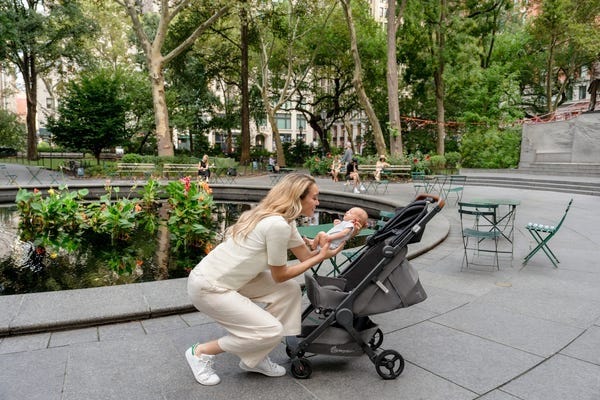

Advantages of Using Strollers for Nature Adventures
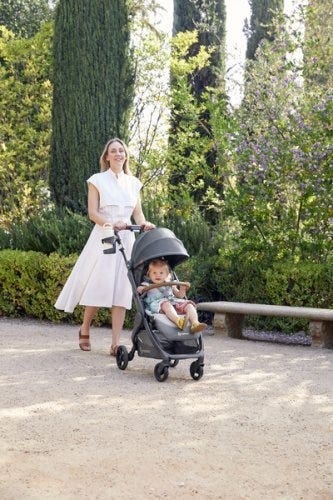

While baby carriers are fantastic for mobility and closeness, depending on the adventure of choice you might want to be a stroller along too.
There are a LOT of baby stroller options on the market. So we understand how confusing it can be to choose the one that’s right for your family. Not only are there a variety of brands, but a variety of strollers that serve different purposes.
There are a few types of strollers on the market:
- Full-sized stroller: This is typically the stroller parents thing of buying for all its versatility.
- Lightweight or umbrella stroller:These compact strollers are perfect for on-the-go adventures.
- Jogging stroller: Designed for parents who want to combine fitness with outdoor adventures.
- Double stroller: Designed for parents with multiple kids, especially twins.
- Car seat carrier: These strollers connect to a specific car seat. We don't typically recommend these as they can be unsafe for baby and uncomfortable for parents who are pushing.
Learn more about the types of strollers and which one would be best for you.
Benefits of Bringing a Stroller
- Storage Space for Gear: Ample room for carrying all your essentials like a diaper bag, beach toys and more.
- Shade and Weather Protection: Built-in canopies to shield your baby from the sun when they are lounging.
- Options: If you have more than one kid, you can stroll with one and carry the other. Or, if you’re getting warm or your little one is getting fussy, you can switch up their position from stroller to carrier or vice versa.
Safety Tips for Strollers
- Ensure your stroller is in good working condition. Make sure buckles are still buckling and that there are no rips or holes that could compromise your baby’s safety.
- Use sunshades or bug nets to protect your little one’s skin.
- Securing the baby properly: always buckle up your baby for safety even if you think they are old enough to go without the buckle.
Combining Baby Carriers and Strollers
For the ultimate flexibility, consider using both a baby carrier and a stroller on your outings.
Combining both options allows you to adapt to different situations. Use the carrier for more rugged trails and switch to the stroller for smoother paths or when your baby needs a nap.
Transition Tips
- Smooth Transitions: Plan stops where you can easily switch from carrier to stroller.
- Pack Light: Only bring essentials to make transitions easier.
Tips for a Successful Adventure
Planning Ahead
- Route Planning: Choose baby-friendly trails and parks. Check local mom groups or outdoor groups and get recommendations for the best outings for kids.
- Check Weather Conditions: Avoid extreme heat or unpredictable weather. Even with our most breathable carriers, when it’s hot, it’s hot. And having two bodies against each other in the heat will be naturally hot and sticky already.
- Packing Checklist: Include diapers, snacks, water, sunscreen, and a first-aid kit. These all-position carriers have storage pockets where you can fit some of the items easily!
- Stay Hydrated and Nourished: Pack healthy snacks to keep energy levels up and bring plenty of water for both you and baby.
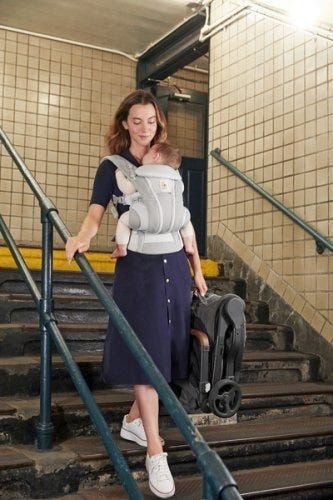

Summer adventures with your baby are a wonderful way to create lasting memories and enjoy the beauty of nature together. From baby carriers to strollers, Ergobaby products are designed to provide comfort and ease for both you and your little one. So, gear up, get outside, and explore the world with your baby by your side.
Ready to embark on your own summer adventures? Check out Ergobaby’s range of baby carriers and strollers to find the perfect match for your family’s needs. Visit our website today and start planning your next outdoor excursion!





